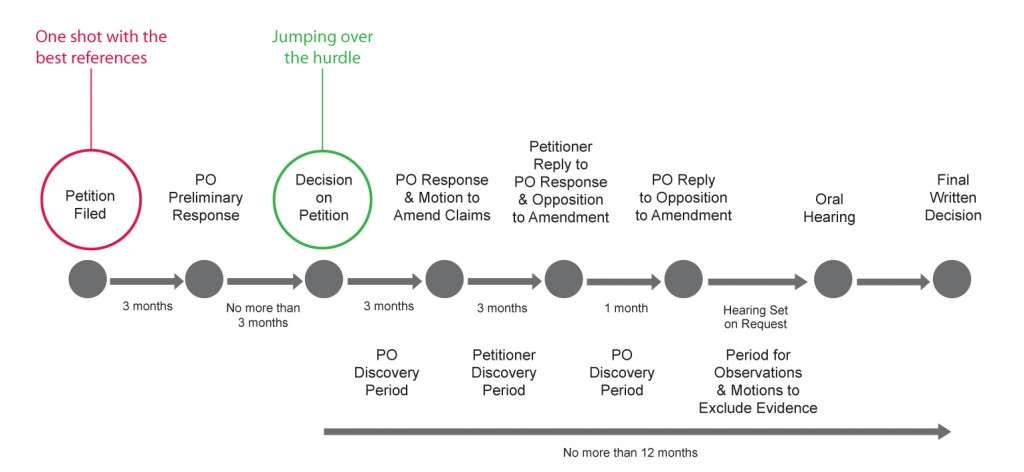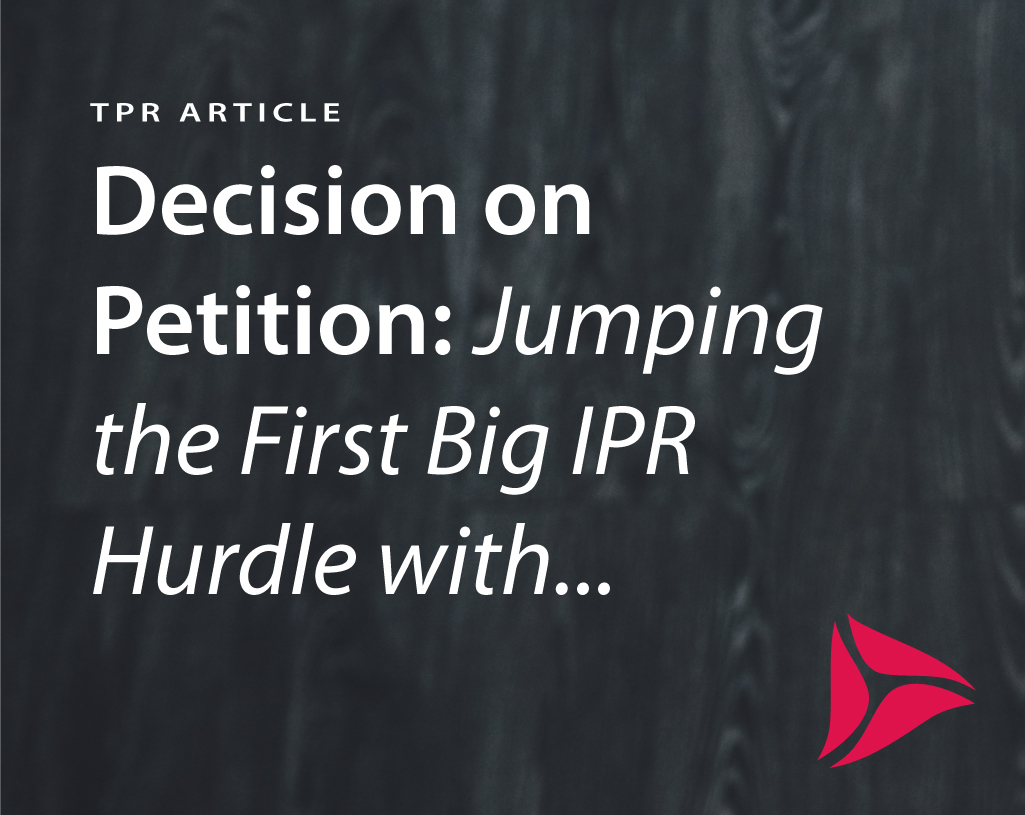Now, over two-years since the America Invents Act (AIA) went into effect, IPR (Inter Partes Review) has become an increasingly attractive alternative to litigation. The growth in these proceedings shows a strong acceptance of the procedure. It is changing the way in which IP law is practiced in the United States and how patentability is challenged.
To be successful, the challenger first has to get over the big hurdle at the initial filing, which is getting past the USPTO’s decision on petition as to whether or not it will proceed to trial under the Patent Trial and Appeal Board (PTAB). How can this be done? The strongest prior art, consisting of patents or printed publications, must be provided at the initial filing of the petition in order to identify the claims challenged and the grounds and supporting evidence on a claim-by-claim basis. With only one shot, the pressure is on to find the best prior art, gather the evidence, and pull the case together in a very short window of time. PTAB statistics indicate that once the USPTO has made a decision to institute regarding a petition, around 70% of such disputed cases proceed to a successful outcome for the challenger. Therefore, if the challenger can overcome that big hurdle, there’s a strong chance of invalidating the patent. After all, at that point the USTPO has already concluded that there is “a reasonable likelihood that the petitioner would prevail”. Great news for the challenger, but not so good for the patent owner!

Graphic: http://www.uspto.gov/sites/default/files/ip/boards/bpai/trial_practice_guide_74_fr_48756_081412.pdf
Here are three reasons why you need a good search before you file an IPR as a petitioner
1. A strong reference can considerably improve your chances of winning
2. If you find the good reference after the proceeding is over, the estoppel provisions prevent you from relying on it later
3. If you find a good reference after the initial filing, the rules of the IPR make it difficult to introduce that reference later
With only one shot at the initial filing of the petition, if you want to jump the hurdle and increase your chances of getting a positive decision on the petition, then you need reliance on comprehensive searches commissioned upfront to find the very best references in support of your case. Searches need to be entrusted to the best team of experts; those who are technically advanced in the scientific/technological field and are experienced with using and navigating professional searching tools.
If you aren’t finding the prior art you need, here are a few additional approaches you may want to consider:
- Instead of focusing on keywords, incorporate classification-based searching into your patent searches to broaden it out to include more peripheral areas of the technology where prior art may previously have been overlooked
- Trace companies and inventors to specific countries and have the search conducted in that country and language
- Consider a search that can review non-patent literature documents in the native language of publication, diving deep into conference proceedings, product catalogs, dissertations, etc., in archives such as the National Library of Beijing, Diet Library in Tokyo, The Shiba Medical Center in Israel, the University of Düsseldorf or other relevant archives.
Considering the points above, a professional search firm can be a key piece to your success. There’s too much at risk if you choose to cut corners on the search. Utilize trusted searching professionals to gather evidence for the case in the form of both patents and other printed publications, wherever these references may be lurking in the foreign or domestic realm.
In summary, as a challenger, the chances of invalidating a patent once there has been a decision to institute are very favorable. However, to get to that stage, there’s only one shot to present the best references. The challenger needs to take a deeper look at how they are getting their prior art searches done effectively to ensure that they are giving all the evidence needed for “jumping the first big hurdle”.


